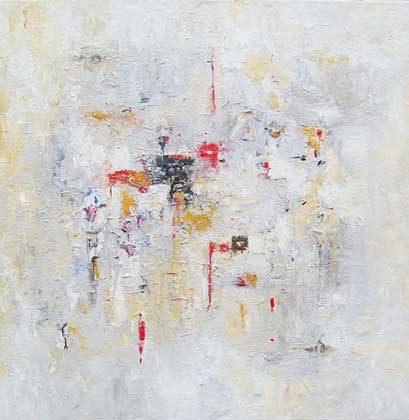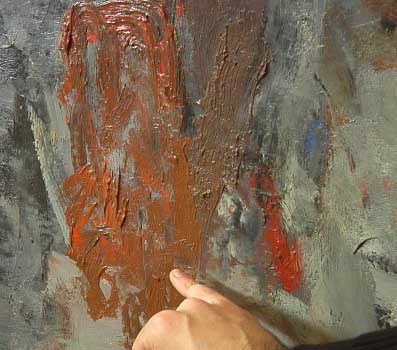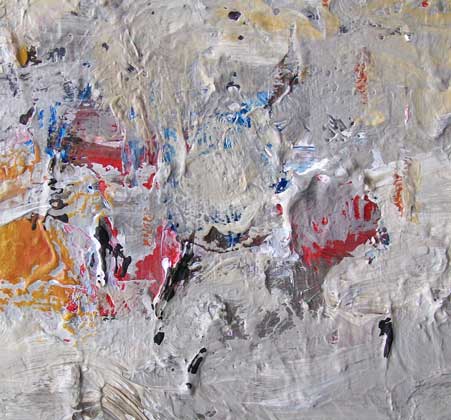
Kathy King. Interior Monologue. 2010
When I began teaching at MoMA several years ago, I realized that it was the perfect place to use my background as a conservator, artist, and art historian, since the collection already provided the best learning resource: the artworks themselves.
By painting to sharpen the eye, and by using close looking to improve as a painter, I have found that there is no substitute for the firsthand experience of art, both in the classroom and in the studio. When MoMA invited me to teach an online studio course, naturally I was excited to teach students all over the world—but I also thought the course could never compare to the “real” one held in the Museum. Fortunately, I’ve learned at least as much as my students have in this first online course, and I now realize that my initial assumption couldn’t be further from the truth.
Working with MoMA’s Education Department and a terrific video production team called Plowshares Media, we’ve brought paintings to life on screen as I’ve never seen them before. The physical nuances of a painting—the texture at the end of a brushstroke, a transition from matte to glossy paint—are crucial to understanding how a painting is made and how it visually functions, and they are all captured here in full effect.

Detail of Philip Guston's The Clock. 1956–57. Oil on canvas. The Museum of Modern Art. Gift of Mrs. Bliss Parkinson. © 2010 The Estate of Philip Guston
In my course Materials and Techniques of Postwar Abstract Painting, each week focuses on a single artist of the Abstract Expressionist circle. Students watch a series of videos ranging from art history lectures to studio demonstrations, and then paint a canvas using that artist’s materials and techniques. Images of these paintings are then uploaded to a discussion forum, allowing us all to study and comment on each other’s work. Week to week, I’m amazed at the discussions that have taken place between students in, say, Moscow and Miami, Curacas in Colombia, or Croton-on-Hudson in New York.
While some students have no prior experience with painting, others are working artists with long exhibition histories. Regardless, every member of the class has been introduced to a series of new approaches that expand both an understanding of abstract painting and our ability to paint. Check out the detail below of student Kathy King’s amazing painting based on the work of Philip Guston!
If you’d like more information about The Materials and Techniques of Postwar Abstract Painting, check out MoMA.org/courses. Hope to see you online or in the classroom!

No comments:
Post a Comment